Bhutan, a Buddhist kingdom on the Himalayas’ eastern edge, pushes for CBDC pilot as demand for digital currency jumps.
What happened? Bhutan’s central bank, the Royal Monetary Authority (RMA), selects Ripple’s CBDC Private Ledger to pilot a central bank digital currency (CBDC) in phases. A CBDC is virtual currency backed and issued by a central bank.
Central Banks Across The Globe Pushing For CBDC
The interest in digital currency has grown significantly in the recent past. The new interest is equally among retail users as well as businesses.
If we look at the developments around cryptocurrency this year, it is clear that there is wider level of acceptance in this new system which was missing a year ago.
Governments and central banks that were earlier reluctant to recognize Bitcoin and other digital currencies are now amid huge pressure with the growing adoption among enterprises. A trend has now emerged amongst Central banks to issue digital version of the fiat as there is little scope for them to counter public digital currencies like Bitcoin.
According to Atlantic Council CBDC tracker, 81 countries (representing over 90 percent of global GDP) are now exploring a CBDC. In May 2020, only 35 countries were considering a CBDC. 5 countries have now fully launched a CBDC. The Bahamian Sand Dollar was the first CBDC to become widely available.
Bhutan To Use Ripple’s CBDC Private Ledger
Ripple’s CBDC Private Ledger is a private version of the public, open-source XRP Ledger (XRPL). It provides central banks the security, control and flexibility needed to deploy a CBDC strategy without compromising financial stability and monetary policy objectives. Central banks of many countries are conducting pilot on the Ripple’s Private Ledger.
Read More: Central Bank of France Considers Ripple as a Possible Platform for Europe’s CBDC
Beyond privacy, Ripple’s CBDC solution is also custom designed to handle payments at the volume of transactions required by a successful retail CBDC. This provides central banks like the RMA with the security, control and flexibility they need to deploy a CBDC without compromising financial stability or monetary policy objectives.
Like the public XRP Ledger, moving money through Ripple’s CBDC solution is cost-effective, reliable and nearly instantaneous. In addition, the solution will enable the RMA to eventually access a network of CBDC ledgers for full settlement interoperability, while still maintaining monetary and technological independence.
Yangchen Tshogyel, deputy governor of the Royal Monetary Authority of Bhutan, said:
“Our collaboration with Ripple is testament to the potential of CBDCs to provide an alternative and sustainable digital payment instrument in Bhutan. Ripple’s groundbreaking technology will allow for the experimentation of a CBDC with our existing payments infrastructure—while ensuring efficient and cost-effective cross-border transfers.”
Financial Innovation Supporting Inclusion
Over the past few years, the RMA has established itself as a leader in financial innovation. Building atop the country’s payments infrastructure and capabilities, this new initiative will tap our CBDC solution to support seamless retail, cross-border and wholesale payment use cases for a digital Ngultrum.
The RMA believes that easier, faster and more affordable payments, both domestically and internationally, will help it reach its goal of increasing financial inclusion by 85% by 2023.
The power of the technology underlying the XRP Ledger, combined with Ripple’s experience in cross-border payments and tokenization, will harness tremendous speed, cost and innovation advantages in support of this mission.
A Sustainable CBDC
In addition to the technology, Bhutan selected Ripple’s CBDC solution for its commitment to sustainability. Ripple says that its CBDC solution is carbon-neutral and 120,000x more energy efficient than PoW blockchains.
For a country that has pledged to remain carbon neutral, this combination of innovative finance with sustainability is a natural fit.
Bhutan’s move to launch a CBDC is driven by its desire to enhance digital and cross-border payments. Additionally, it is also driven by the motto to increase financial inclusion efforts and extend its commitment to sustainability as the only carbon-negative country in the world.
A central bank digital currency (CBDC) is virtual currency backed and issued by a central bank.



